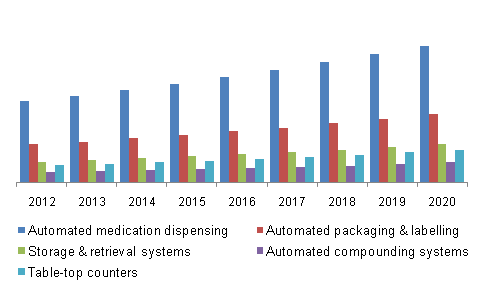Global Wearable Medical Device Market is expected to reach USD 27.8 billion by 2022, according to a new report by Grand View Research, Inc. Rising prevalence of conditions such as obesity and hypertension, as a result of sedentary lifestyle is anticipated to boost the demand for wearable medical devices. Moreover, increasing health awareness is further expected to augment the demand for these devices.
Additionally, growing incidences of chronic conditions, such as diabetes, which require round-the-clock monitoring, are expected to increase the demand for wearable technology. Technological innovation is projected to be vital for growth of this industry over the forecast period. Smart watches, smart bands, and smart clothing are anticipated to be the key areas for development. Increasing penetration of smart cellular phones is expected to assist growth of this technology. However, patient privacy and security concerns along with complexity in engineering are expected to impede growth of the industry.
View
summary of this report @ http://www.grandviewresearch.com/industry-analysis/wearable-medical-devices-market
Further key findings from the study
suggest:
- Diagnostic wearable medical devices held substantial share in 2014 owing to increasing usage in remote patient monitoring as well as home healthcare
- Therapeutic wearable devices are anticipated to exhibit remunerative growth over the forecast period. Increasing penetration of products, such as insulin monitors, is assisting the growth of wearable equipment.
- Diagnostic devices such as vital sign monitors are expected to witness lucrative growth over the forecast period. Rising incidences of chronic diseases are expected to boost the demand for this equipment.
- Wearable medical devices have applications in sports & fitness monitoring, home healthcare, and remote patient monitoring. Home healthcare held significant shares of around 50.0% in 2014. Simplified usage of this equipment along with ability to synchronize with cellular phones as well as tablet devices assisted the growth of this segment.
- On the contrary, remote patient monitoring is projected to exhibit growth rate of over 25.00% in the next seven years. Increasing geriatric population base coupled with demand for continuous monitoring is expected to fuel the growth.
- Strap/clip/bracelet or watches held substantial shares of around 40.0% in 2014, and is expected to grow at a lucrative rate over the forecast period. Simplified engineering, aesthetically appealing products, and synchronization with mobile application are anticipated to drive this segment’s growth.
- North America dominated the overall market with approximately 40.0% of shares. This can be attributed to increasing per capita income as well as rising healthcare spending, and advanced healthcare infrastructure and presence of OEM in this region.
- Asia Pacific is projected to grow with a rapid rate of around 32.0% over the forecast period. Economic development coupled with improving healthcare systems is expected to help the industry grow in this region.
- Key companies of the wearable medical devices industry include Fitbit Inc., Garmin, Vital Connect, Omron Corp., Sotera Wireless, Jawbone, Pebble Technology Corp., Basis Science, Inc., Withings, Intelesens Ltd., Covidien Plc, LifeWatch AG, Polar Electro, Philips Electronics, and Everist Genomics
Browse All Reports of
this category @ http://www.grandviewresearch.com/industry/medical-devices

